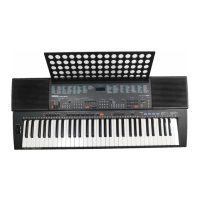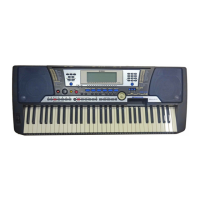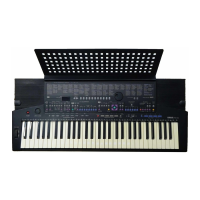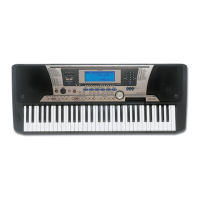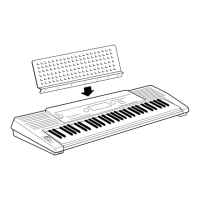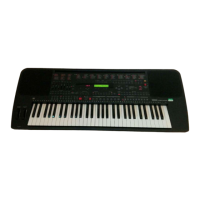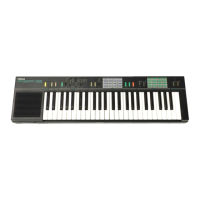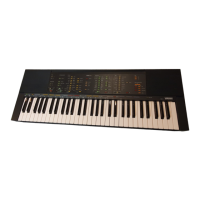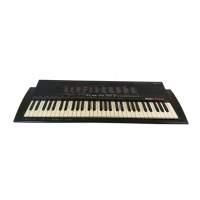
Do you have a question about the Yamaha PORTATONE PSR-500M and is the answer not in the manual?
| Brand | Yamaha |
|---|---|
| Model | PORTATONE PSR-500M |
| Category | Electronic Keyboard |
| Language | English |
Outlines initial setup steps before playing the PSR-500M, including power and connections.
Provides simplified procedures for basic PSR-500M features, referencing detailed sections.
Details all PSR-500M features and controls, organized by function for comprehensive understanding.
Contains supplementary information on MIDI, polyphony, troubleshooting, maintenance, and system reset.
Details all buttons, knobs, and displays on the PSR-500M's top control panel.
Explains the function and usage of the PAGE MEMORY feature for storing panel settings.
Lists the numeric buttons used for selecting accompaniment styles.
Details the buttons for accessing stored voice combinations.
Identifies controls for recording and playback of melodies and chords.
Lists buttons for controlling MIDI communication modes and settings.
Identifies controls for recording and playback of short sequences or sounds.
Instructions on connecting the AC adaptor or installing batteries for power.
Guides on connecting headphones or external audio systems.
Explains how to connect and use the foot pedal for sustain control.
Instructions for attaching the music stand to the keyboard.
Basic steps to choose and play different instrument sounds.
Simple guide to applying reverb effects to the selected voice.
How to play different voices with the left and right hands.
Step-by-step guide to using the auto accompaniment feature.
Details general controls affecting the entire instrument's operation.
Explains how to adjust the overall sound output level.
How to shift the keyboard's pitch up or down in semitone intervals.
Explains storing and recalling panel settings for quick access.
Guide to choosing from the 100 available accompaniment styles.
Details on starting, stopping, and controlling accompaniment variations.
Explains playing chords with minimal key presses for accompaniment.
Describes playing full chords for more complex accompaniment control.
Instructions for choosing from the 100 available instrument voices.
How to assign different voices to the left and right sections of the keyboard.
Adding harmony to melodies automatically based on played chords.
Storing and recalling custom voice setups.
Step-by-step guide to recording melodic parts.
How to edit recorded melody parameters after recording.
Instructions for recording chord progressions.
How to play back recorded melodies and chord sequences.
How to record short sequences or sounds onto the multi pads.
How to trigger and play back recorded multi pad data.
Setting MIDI receive channels and clock synchronization.
Selecting MIDI operation modes like Remote Control or Multi Voice.
Using the PSR-500M as a multi-timbral tone generator.
Receiving system exclusive data for panel setting changes.
Instructions for playing the built-in demonstration songs.
Explains the MIDI IN/OUT ports and their functions.
How MIDI sequence data is used with the PSR-500M.
Basic MIDI communication between keyboards.
Transferring large amounts of MIDI data between devices.
A list of voices and the number of notes they use.
Addresses frequently encountered issues and their solutions.
Lists the technical specifications of the PSR-500M.
General warnings and important information regarding product usage.
Information on Yamaha's commitment to user safety and environmental care.
Regulatory compliance information related to FCC requirements.
